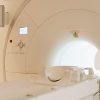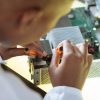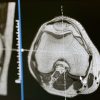$0.00
The Quench Button on an MRI Machine: Ensuring Safety First
Magnetic Resonance Imaging (MRI) is a sophisticated medical imaging technology that provides valuable insights into the human body. While the benefits of MRI are immense, it’s crucial to be aware of safety precautions, especially when dealing with the powerful magnetic fields involved. The quench button is a critical safety feature on MRI machines, and understanding how to be safe around it is essential.
What is the Quench Button?
The quench button, formally known as the “Emergency Quench Button,” is a safety mechanism integrated into MRI machines. It serves as a fail-safe measure designed to rapidly release the immense magnetic field generated by the MRI’s superconducting magnet. This magnetic field is thousands of times stronger than the Earth’s magnetic field, and its strength is essential for producing high-quality images during an MRI scan.
The quench button is typically located in an easily accessible area near the MRI control room. Its purpose is to ensure the safety of both patients and medical personnel in the event of an emergency or malfunction that necessitates the rapid deactivation of the magnetic field.
Why is the Quench Button Necessary?
The superconducting magnet in an MRI machine is maintained at extremely low temperatures using liquid helium. This low temperature allows the magnet to operate in a superconducting state, generating a stable, high-strength magnetic field. However, there are scenarios where it becomes imperative to deactivate this magnetic field rapidly:
- Emergency Situations: If a patient or a foreign object with magnetic properties becomes a safety hazard inside the MRI room, such as a metallic object being pulled into the bore, the magnetic field must be shut down immediately to prevent harm.
- Magnet Malfunctions: In rare cases, a malfunction in the superconducting magnet may occur, leading to the need for an emergency quench to prevent damage to the machine and ensure the safety of everyone in the vicinity.
- Coolant Leak: A sudden helium coolant leak is another potential scenario where the quench button becomes necessary. This emergency procedure prevents helium from escaping, which is costly and potentially harmful.
Safety Around the Quench Button: A Must-Know
Understanding how to be safe around the quench button is paramount when working in or around an MRI facility. Here are some essential safety guidelines:
- Training: Anyone who works with or around MRI machines, from technologists to facility maintenance staff, should undergo rigorous safety training. This training should include the proper use of the quench button and the ability to recognize situations requiring its use.
- Access Control: Access to the MRI room should be controlled and restricted to authorized personnel only. Unauthorized individuals, particularly those with metal objects, should not be allowed into the MRI room.
- Patient Screening: Patients undergoing MRI scans should be thoroughly screened for any metallic implants or objects before entering the MRI room. Such objects can pose a serious safety risk.
- Safety Protocols: MRI facilities should have clear safety protocols in place, including evacuation plans, to ensure the safety of personnel and patients in the event of a quench.
- Emergency Response: In the rare event that the quench button must be activated, trained personnel should execute the procedure following established safety protocols. Evacuation is a standard response in such cases.
- Maintenance and Monitoring: Regular maintenance and monitoring of MRI equipment are essential to minimize the risk of malfunctions that could necessitate a quench. Preventive measures can help ensure continued safety.
Conclusion
The quench button on an MRI machine is a crucial safety feature designed to protect individuals and equipment in the case of emergencies or malfunctions. Understanding how to be safe around it is essential for all personnel working in or visiting MRI facilities. With proper training, access control, and adherence to safety protocols, the use of the quench button can be both rare and effective, ensuring that MRI remains a safe and valuable diagnostic tool in the field of healthcare.
Recent Posts
Recent Comments
Join our newsletter
Get our emails for info on new items, sales and much more.
Register now to get latest updates on the newest parts!











